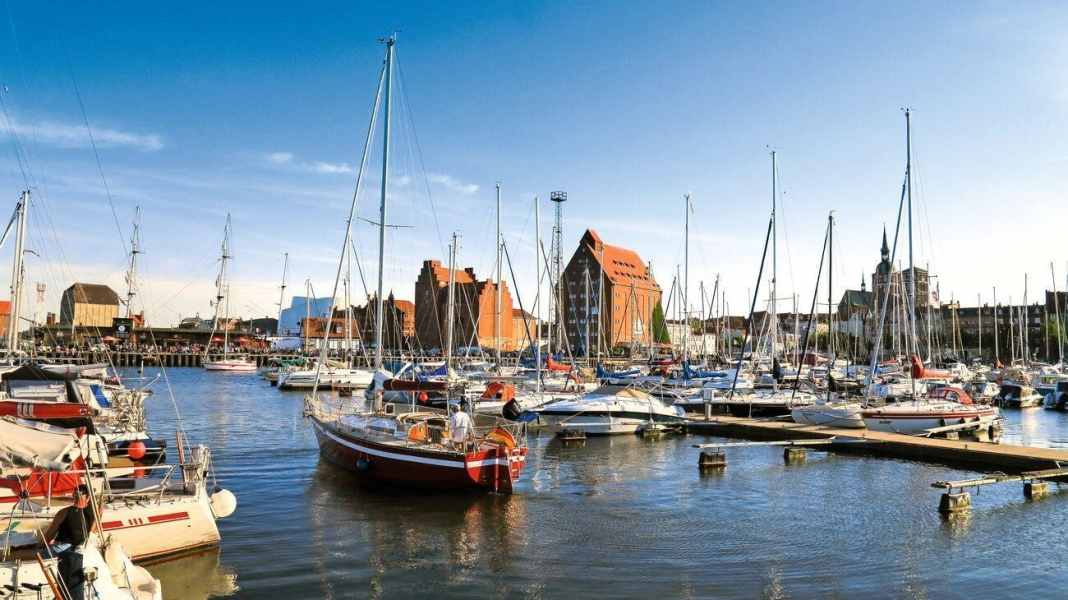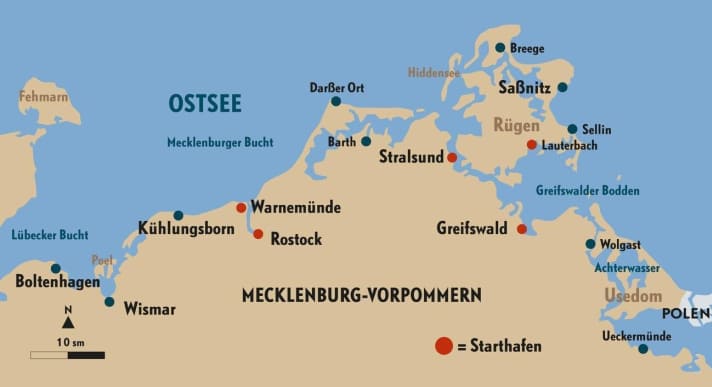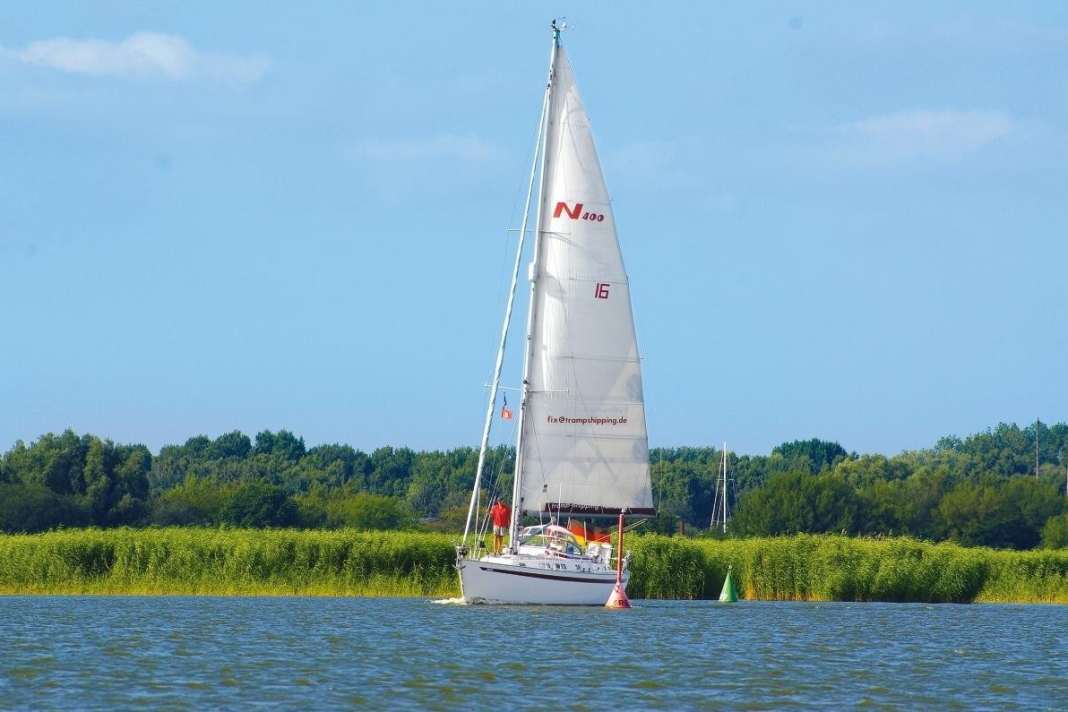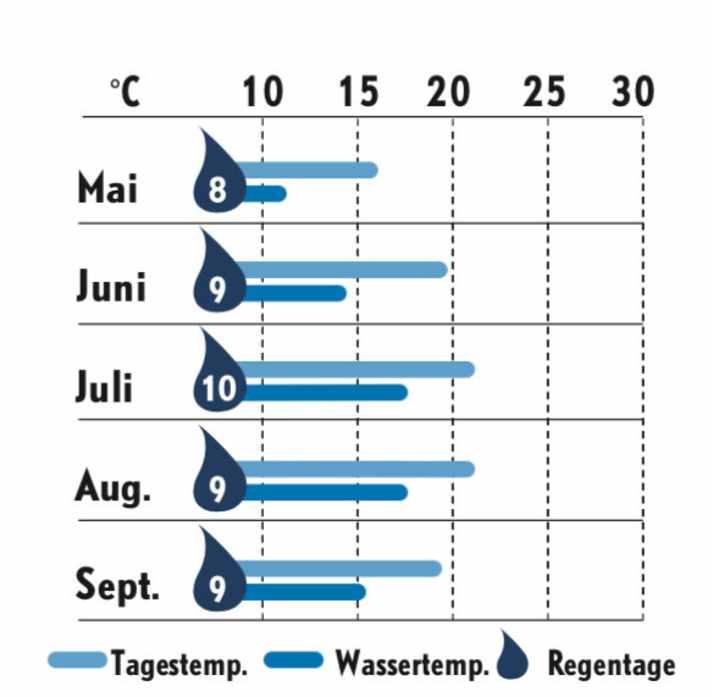

ARRIVAL
The areas off the German coast are of course ideal for travelling by car or train. Crews should only ask in advance where their car can be parked. In some ports of departure, the spaces around the harbour are short-term parking spaces; if you want to stay longer, you should therefore find out in advance from the charter company where - if necessary - long-term parking spaces are available and how much they cost.






CHARTER
The fleets in this part of the waters of Mecklenburg-Vorpommern are centred on Stralsund, Breege and Lauterbach on Rügen, Greifswald and Kröslin. There are also smaller fleets at some other locations. A speciality of the German coast is the so-called owner charter, which is somewhat more widespread here than in the Mediterranean. Another difference is that various companies are active on the Baltic coast that do not offer their boats through traditional charter agencies, but instead market them directly themselves. These can be found at trade fairs, through adverts or on the Internet. In general, the price level for boats on the German coast is low. If you are used to weekly prices in the Mediterranean, you will be pleasantly surprised!

WIND & WEATHER
Although the Baltic Sea around Rügen also has the unpredictable summers of the German coast, the sun tends to shine a little more often here than further west. From April to the beginning of September, winds from westerly directions dominate the picture, and sometimes longer winds from the east when the high pressure is stable. What they have in common is that there are often good sailing winds on the German coast - the long-term average for the summer is slightly lower in the east than in the western part of the Baltic Sea, around 10 knots. However, the Baltic Sea is also good for strong winds, the keyword being Atlantic lows. Even in summer, they can bring strong winds or stormy days, quite regularly a handful per month. They also bring heavy rain. In recent years, however, there have also been surprisingly long, very dry phases, a side effect of the kilma change.
The fact is that anyone travelling on the Baltic Sea has to be prepared for a few days of bad weather, even at the height of summer, and of course has to have full oilskins and boots with them.
NAVIGATION & SEAFARING
The waters around Rügen are more challenging to navigate than those in the western Baltic Sea. Many Bodden fairways are narrow, it quickly becomes very shallow away from them, and skippers have to follow the buoy line meticulously in some corners, otherwise they will either get stuck in mud or run into sand with stones. This applies, for example, to the fairways between Hiddensee and Rügen, the Strelasund or the entrance to the Greifswalder Bodden. In addition, the fairways tend to silt up in many places. You should therefore be travelling in the area with up-to-date charts and pay attention to water level fluctuations caused by strong winds. The shallow water depths in Greifswalder Bodden are also responsible for a short, steep wave in easterly winds, which can be very unpleasant.
Strong winds not only cause the famous "bathtub effect", which causes the water level to rise or fall depending on the wind direction, but also the corresponding current, for example in the Strelasund or in the passage between Rügen and Hiddensee.
As large parts of the area are a national park or biosphere reserve, the existing nature conservation rules must be observed. For example, there are sometimes restrictions during breeding seasons, or anchoring is prohibited in some bays. However, the areas and times are clearly marked on the nautical charts. It is important to note in the Greifswalder Bodden that the outlying island of Ruden cannot currently be approached as the harbour is closed. The other island is Greifswalder Oie, which only serves as an emergency harbour.
There are a few bridges in the area, the most important being the Ziegelgrabenbrücke near Stralsund, which is the bottleneck when entering or leaving the Strelasund. It opens several times a day; the opening times can be found on the website of the Stralsund Waterways and Shipping Authority.
HARBOURS & ANCHORAGES
The harbour network on this part of the German Baltic coast leaves little to be desired, only the infamous "hole" between Warnemünde and Hiddensee is a problem for some crews on arrival. The distance of around 43 nautical miles without a safe harbour, apart from the port of refuge Darßer Ort, is a problem for some crews. In addition to the two top destinations, the Hanseatic cities of Stralsund and Greifswald, which nobody should miss, there are many other highlights. These include spectacular harbours such as Lohme harbour on the chalk coast, one of the most scenic on the coast. Or the perfect marina of Lauterbach with its original floating and pile houses. Or the cosy village harbour of Kloster on Hiddensee, a real gem.
The standard of the facilities has been good and rising for years, sanitary buildings have been modernised in many places and the harbours have become more attractive to tourists with more restaurants, bars, cafés, etc. Nevertheless, the coast has its own peculiarities for newcomers to the Baltic: Mooring is often done forwards, less often backwards in boxes, and stern lines are deployed to two poles. Charter crews sometimes miscalculate the distance between the piles, which are designed for different lengths of boat. In many places you can only access the showers and toilets with code cards, hot showers cost extra (tokens or money). The harbour fee is either paid at the harbour office or the harbour master makes a round of the harbour in the evening and early in the morning. The price level for a twelve-metre boat is a reasonable 20 to 25 euros.
Another advantage of the area compared to the western Baltic Sea is the large number of very sheltered anchorages. There is almost always a nice spot for the night at the edge of the fairway or in deeper bays, although not always for every draught.
LITERATURE & NAUTICAL CHARTS
Cruising guide: Jan Werner: Ostseeküste Bd. 2, Delius Klasing, many good aerial photos! Harbour guide Flensburg-Gdansk, Edition Maritim. If you buy a set of pleasure boat charts, you will also always receive a booklet with harbour plans, regardless of the provider. Sea charts: Delius Klasing typesetting 2, NV-Verlag: Series 4 The chart yard, set 2 The chart sets usually differ in the area sections, so skippers have to see which one suits the planned destination. All charts are also available as a digital version and as a bundle with a free app.
TERRITORY CHARACTERISTICS
One of the absolute area highlights on the German coast is without question the area from Rügen with the Greifswalder Bodden and further across the Achterwasser to the German-Polish border. Nowhere else can sailors find such an unspoilt natural area that scores so highly in terms of scenic beauty. With a bit of luck, sailors may even encounter entire seal colonies on the eastern side of Rügen. The majestic chalk cliffs in the north of Rügen, beautiful sandy beaches and dunes on Hiddensee, dense forests and great cities like Stralsund and Greifswald in between. Both are worth a two-day stop just for their beautifully restored old towns and many sights.
In between, there are sometimes winding fairways through reed beds and beautiful small harbours such as Lohme, Kloster or Schaprode - just the right mix for crews who aren't always looking for the hustle and bustle. For those who like it, there is a good variety between tourist destinations, which can be very busy in high summer due to the many land-based tourists, and peaceful seclusion.
As a skipper, you have to come to terms with the fact that you often have to follow fairways, many parts of the Bodden are shallow and the water is often murky, so you need to keep an eye on the buoy mark and the depth gauge. The area is also somewhat more challenging to navigate than the western Baltic Sea.
The charter crews' classic is the trip around Rügen, which, with a few detours, is around 90 nautical miles. How you sail around it depends largely on the wind direction and strength. The Greifswalder Bodden can be particularly rough when the wind blows strongly and for long periods from the east. However, there is always a safe harbour at the end of the day, the only slightly longer stretch is around the south-eastern tip of Rügen from Saßnitz. The crews have to persevere along the famous seaside resorts of Binz and Sellin, which can be over 20 miles.
However, many charter crews skip the more southerly waters of the Achterwasser towards the Polish border, as it becomes very shallow and many of the deeper keel yachts are not ideally suited here. For smaller vessels and heavy yachts, on the other hand, it is a real paradise.

